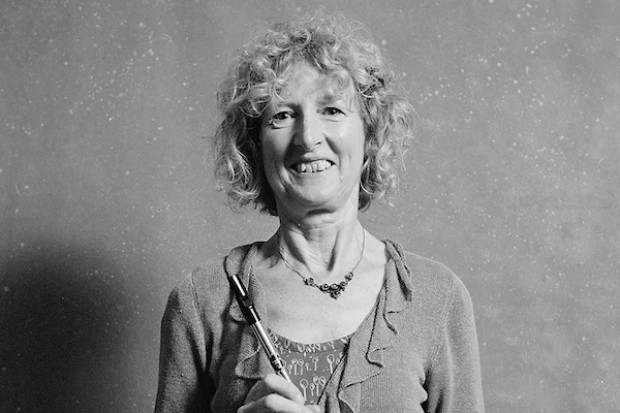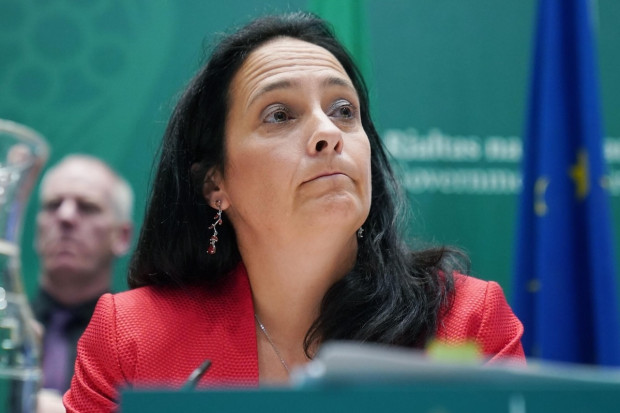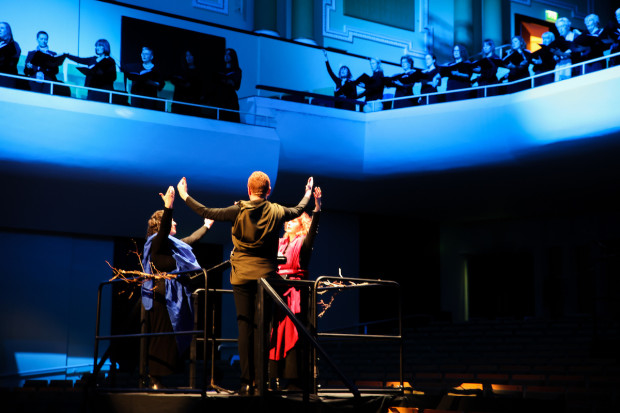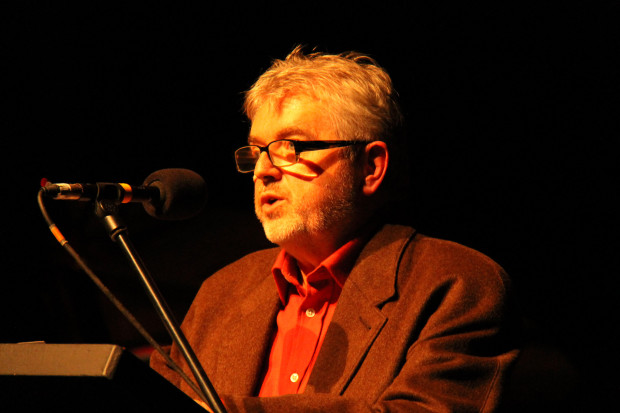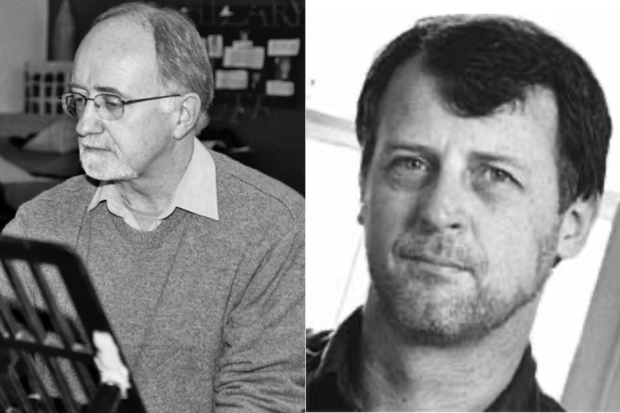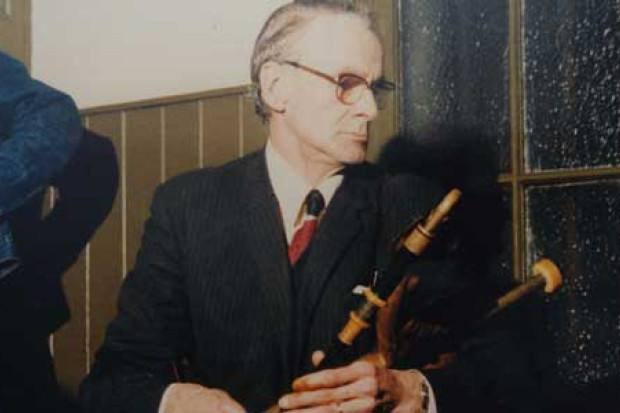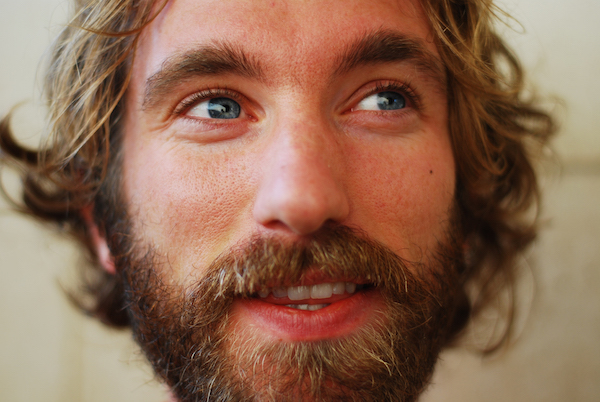
Interview with Caoimhín Ó Raghallaigh – ‘…what happens when you stop playing tunes…’
Toner Quinn: You have just independently released a new twenty-eight minute CD, Where the one-eyed man is king, and it is an unorthodox recording for a traditional Irish fiddle player. Could you tell me about it?
Caoimhín Ó Raghallaigh: It started in December 2006. I went to the Tyrone Guthrie Centre in Monaghan and the plan was to experiment with recording music in a way that I hadn’t done before, overlaying fiddles and playing around with them using Logic Pro to manipulate the sound, really simply. It’s just something I hadn’t done before and I wanted to dive straight into it to see what would come out. Basically, being a traditional fiddler, I wanted to see what happens when you stop playing tunes.
TQ: How long had you been thinking of that idea of doing a recording where you weren’t playing tunes?
CÓR: I guess it started when I met Iarla Ó Lionáird in 2005 and had a great chat about music which led to him suggesting certain recording equipment for me to buy. I followed that up. I applied to the Arts Council’s Deis scheme and got funding for it. Where the one-eyed man is king is basically a record of stuff that popped out when I went to the Tyrone Guthrie Centre. I think I was there three weeks in all, but I think six of the tracks are from that first week in December.
TQ: You have composed about half the material on the CD.
CÓR: I wouldn’t call it composed. What I tend to do is just find a little phrase and then repeat it, and that phrase gets shorter and shorter until it’s a rhythmic thing, a four-second segment and you repeat it over and over. And then you listen back to it, and while you are listening back something else comes into your head. I didn’t intend to write it at all. I had no idea of where it was going.
TQ: And were you conscious at the time that you were doing something different to normal traditional fiddling?
CÓR: I was conscious beforehand that I wanted to.
TQ: What were your other terms of reference when you were approaching the whole project?
CÓR: One would be Sigur Rós who are an Icelandic ambient rock group. Probably the second time I met Iarla he recommended a load of music and said, look, you need to listen to these guys. I always follow stuff up like that – with films, books, music, anything. I will write it down. I will follow it up I will order it on the internet, and generally people are spot on.
MySpace is something that has also liberated my mind recently. It is because you realise the vast amount of musicians out there – the vast amount of people doing sub-standard stuff, but also the vast amount of people doing amazing stuff. You go onto something like MySpace and you realise you can do absolutely anything you want musically and you will still have an audience for it. I was finding friend requests coming in and I would go through all the people, listen to everything they do, and there are two places where I think things are really happening. One is Stockholm and the other is Toronto. You realise that the traditional music world is so small and narrow minded.
For instance, I haven’t put Where the one-eyed man is king in shops. I didn’t bring it down to the Willie Clancy week. I don’t think people in traditional music here would be interested in it. It’s only for sale at certain gigs and on the internet. I wouldn’t even sell it at certain gigs because I know if you sell it to somebody from a really traditional background they are not going to be interested. They are going to say, what the hell is this?
TQ: Do you still find inspiration in traditional music?
CÓR: Well I have delved into traditional music massively and what I find of interest is generally in old recordings. But we have gone past the point of it being an oral tradition. We are at a stage where actually what is current in traditional music is depleted in terms of its musical richness, I would feel. We have defined things and thus other possibilities cease to exist.
One way of thinking about it that I find useful is to use the Schrödinger’s Cat thought experiment. Erwin Schrödinger was a major physicist and he actually briefly lived in Dublin in the 30s. He had a famous thought experiment, in which you put a cat in a box with a radioactive element which if it decays will emit a cat-killing mechanism. You close the lid and conventional reasoning would say that at any subsequent point the cat is either alive or dead. It has either been killed or it hasn’t. But what quantum physics actually tells you is that the cat is simultaneously alive and dead until the moment when you open the box. Once you open the box all other possibilities cease to exist.
That is what has happened in traditional music. If you take something like the scale, with an oral tradition, like Irish traditional music was, we never defined what the scale is. We never defined the twelve-note scale. We had a cloud of possibility from which something could emerge rather than a series of definite, quantised steps.
So for instance if somebody now learns the fiddle they will be taught the twelve notes of the scale. And whenever they hear somebody else playing an F, they hear it as natural or sharp. Whereas in fact what the other person might be playing is something that is 17 cents sharp of F natural. So it’s a question of when you define something all the other possibilities cease to exist. And that’s the Schrödinger’s Cat analogy – when you open the lid all possibilities cease to exist.
When I listen to the playing of Willie Clancy, what I hear and what really excites me are all the things he didn’t do, but you hear them. You hear everything he could have done, the cloud of possibility. Whereas when you hear most people playing traditional music today, you only hear the one thing they did do. I get massive inspiration from going back and studying old recordings in detail. Let’s say Colm Ó Caodháin, the sean-nós singer, the playing of piper Willie Clancy, people like that. I continue to revisit those and look at things in detail, extract things from it.
TQ: Did you have a typical traditional fiddler background?
CÓR: Yes and no. I think I have gone into way, way, way more detail than most people in my learning. I started at 10 and up to about 16 I was in the system, going to Comhaltas Ceoltóirí Éireann in Ballinteer for lessons. I was very lucky with certain teachers. I had Michael Tubridy teaching me flute, Phelim O’Reilly in Clontarf teaching me fiddle. I had pipes as well. Joe Doyle was teaching me pipes. They were hugely inspirational. But in terms of goals and aims and peers it was Comhaltas. So the aim is to win an All Ireland, to go on a Comhaltas tour, and so on. It’s very narrow and the way you judge music is really narrow in terms of what is acceptable and what is not. At 16 something made me realise that nobody was teaching the thing that mattered, the difference between music that lifts your heart and music that doesn’t, which is the thing that makes life worth living.
I guess I was a reflective person anyway. I remember one of my favourite things at that time was a television series called The Blackbird and the Bell which Tony MacMahon produced. The first time I met MacMahon we talked for hours and hours and hours about The Blackbird and the Bell. I would have identified MacMahon as a person that had that thing in their music. I asked him about that and got some good advice. MacMahon was somebody I was hugely inspired by. I discovered his music through that album with Noel Hill, I gCnoc na Graí, and his solo record from the early 1970s. I would have been listening to them for years before I met him. So he was a major inspiration. Meeting him, I was interested in finding out why his music had a power to it that other people didn’t have. That’s what I was curious about. And I think it is pretty obvious because he is an extremely powerful person. He introduced me to some amazing music, a lot of music from outside Ireland.
I guess that a lot of traditional music today is ego driven. The focus is on what do you do to a tune, what are the variations you can put in, how cool can you make it. A reversal of that for me is playing a tune, one tune, a very simple tune, that maybe takes 20 seconds to play. I would play it over and over and over for maybe half an hour. For the first ten minutes, my brain churns out all the possible variations and different things it could possibly do – that was very much me doing my thing to the tune. But then it would go through a period, again probably about 10 minutes, of the tune just being completely empty of everything, just the bare notes. And then something happens – things would start to come from nowhere. I think that’s probably pretty common with all sorts of artists, where you are no longer in control. Everyone talks about that, but it happened for me at age 17, and since then that for me is what music is about.
TQ: You studied theoretical physics in Trinity College. Why not music?
CÓR: I was aware I didn’t want to study music because there I don’t think there is anybody coming out of the third-level traditional music education system doing anything interesting. In other countries, such as Sweden, I have seen the education system produce incredibly interesting music from folk traditions, but not in Ireland.
TQ: And why is that?
CÓR: Because of the music education system and the lack of it. The third-level music education system in Ireland in general is mind narrowing rather than mind expanding. The one exception I have seen is Donnacha Dennehy’s Music and Media Technologies course in Trinity College. People come out of that incredibly curious about everything. Actually, third-level students and educators in Stockholm – I travelled there in March – perceive our third-level traditional music courses in Ireland as not particularly innovative: mind-narrowing rather than exciting. What we might consider as being innovative here, they perceive as being hard-line traditional.
TQ: What does this say about the overall traditional music scene in Ireland?
CÓR: It’s so narrow. It’s not very progressive. We don’t have a progressive traditional music. There is maybe one or two people doing something interesting. Traditional musicians are afraid to break out of it. There is amazing Irish contemporary classical music, amazing contemporary Irish jazz, but non-existent contemporary traditional music. That’s why Stockholm was so interesting. I went there to try and figure out why there is interesting contemporary folk there. I met the products of the system and the educators, the designers of the system, and talked to them, and had amazing conversations, and we are basically at the point they were thirty years ago. They put in place a system to deal with the gaping holes in their then system of education. And it basically boils down to a handful of people realising what needs to be done and just doing it.
TQ: And you think that needs to be done in Ireland now?
CÓR: Yes, absolutely. Specifically in traditional music, because there doesn’t exist a progressive or contemporary traditional music scene. I think the best thing is to imagine where do we want to be in 30 years. Ideally we would have people who are very open minded coming out of a mind-expanding course where they are given all the tools. What I learned in Stockholm is that to create interesting contemporary traditional music you need to study the tradition in incredibly fine detail. That’s what they are doing.
For instance, the guy who interested me most there, Petter Berndalen, a percussionist, a young fellow. He has studied old fiddle players and current fiddle players in minute detail, and his drumming consists of non-metric clusters. He actually plays the tunes on his percussion. It’s not a drum set really. It’s a sound, a soundscaped thing. He came down to the Willie Clancy week this year for two days. He sat in on some sessions playing a snare drum, and you can imagine the look on people’s faces when they saw this crazy looking dude coming in with a snare drum. Within ten minutes people thought he was the best thing ever.
The educators in Sweden are highly critical of the downward spiral in Irish traditional music over the last 30 years. They were initially inspired by the developments we had, the incredible burst of creativity in the 70s, but in the 30 years since then they have been highly critical that we have been stagnant. And we are – we have been so stagnant. I mean, I don’t know if there has been any group that has done anything that isn’t derivative of the Bothy Band and Planxty. Kíla may be an exception. I think they have certainly done something new, but it is a fusion. You can’t really say it’s contemporary traditional. They use styles and rhythms from traditions that already exist elsewhere. It’s not an analysis of our music. It’s a marrying of something that already exists, and a very succesful marrying of it.
But you can’t view it in the same way as what I am talking about in Stockholm, where their innovations, their progressiveness, is completely based on their own music. They have rhythmic movements completely based on folk music, concepts of temperament and tuning that are completely based on folk music. Sven Ahlback has developed a system of teaching temperaments that doesn’t reference classical music or jazz at all. It is completely based on Swedish folk music.
A music education needs to evolve, to come right from within Irish traditional music. It needs to begin with, and be defined by, close analysis of the details of what we are doing, and then evolve out of that. I think it needs to start with a movement. It will probably start with a group of six or seven people who collaborate, churn things out, talk in depth, analyse in depth, produce a whole body of work together or separately, possibly in collaboration with composers, all sorts of things. But it will be a body of work which will create a movement.
Caoimhín Ó Raghallaigh’s website is www.stateofchassis.com
Published on 1 September 2007
Toner Quinn is Editor of the Journal of Music. His new book, What Ireland Can Teach the World About Music, is available here. Toner will be giving a lecture exploring some of the ideas in the book on Saturday 11 May 2024 at 3pm at Farmleigh House in Dublin. For booking, visit https://bit.ly/3x2yCL8.












